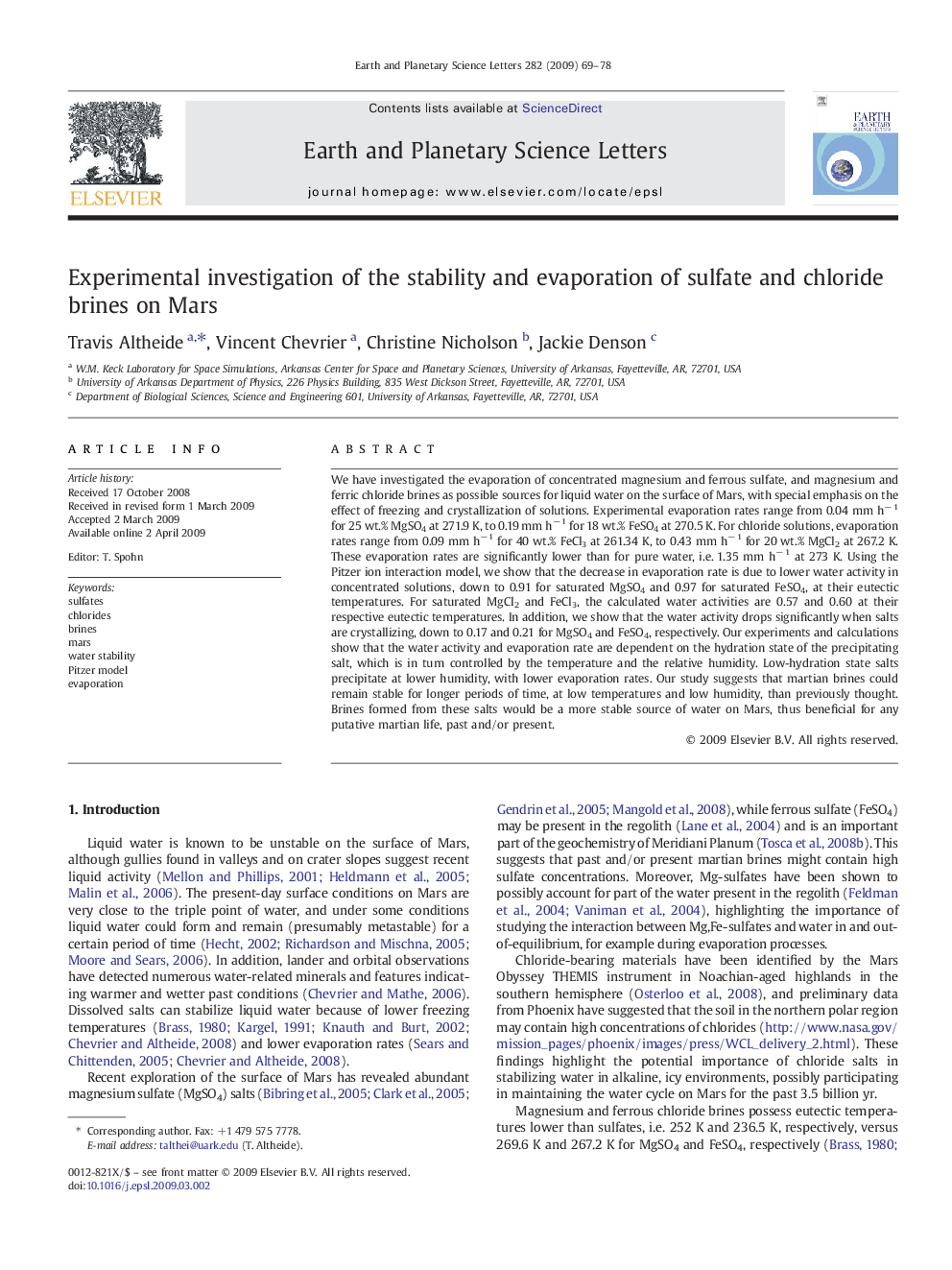| Article ID | Journal | Published Year | Pages | File Type |
|---|---|---|---|---|
| 4679083 | Earth and Planetary Science Letters | 2009 | 10 Pages |
We have investigated the evaporation of concentrated magnesium and ferrous sulfate, and magnesium and ferric chloride brines as possible sources for liquid water on the surface of Mars, with special emphasis on the effect of freezing and crystallization of solutions. Experimental evaporation rates range from 0.04 mm h− 1 for 25 wt.% MgSO4 at 271.9 K, to 0.19 mm h− 1 for 18 wt.% FeSO4 at 270.5 K. For chloride solutions, evaporation rates range from 0.09 mm h− 1 for 40 wt.% FeCl3 at 261.34 K, to 0.43 mm h− 1 for 20 wt.% MgCl2 at 267.2 K. These evaporation rates are significantly lower than for pure water, i.e. 1.35 mm h− 1 at 273 K. Using the Pitzer ion interaction model, we show that the decrease in evaporation rate is due to lower water activity in concentrated solutions, down to 0.91 for saturated MgSO4 and 0.97 for saturated FeSO4, at their eutectic temperatures. For saturated MgCl2 and FeCl3, the calculated water activities are 0.57 and 0.60 at their respective eutectic temperatures. In addition, we show that the water activity drops significantly when salts are crystallizing, down to 0.17 and 0.21 for MgSO4 and FeSO4, respectively. Our experiments and calculations show that the water activity and evaporation rate are dependent on the hydration state of the precipitating salt, which is in turn controlled by the temperature and the relative humidity. Low-hydration state salts precipitate at lower humidity, with lower evaporation rates. Our study suggests that martian brines could remain stable for longer periods of time, at low temperatures and low humidity, than previously thought. Brines formed from these salts would be a more stable source of water on Mars, thus beneficial for any putative martian life, past and/or present.
